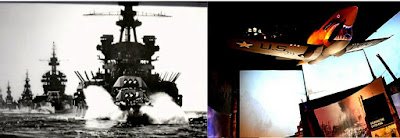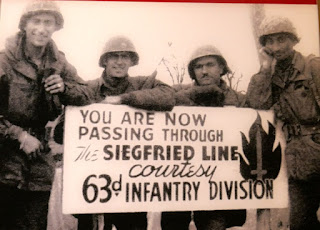At the National World War II Museum there are two buildings I haven't covered in previous posts: US Freedom Pavilion: The Boeing Center and the John E. Kushner Restoration Pavilion.
As the name suggests, the Boeing Center is mostly about planes. There is a theater on the first floor, a gift shop, and kiosks where you can explore stories of pilots. The size of the building is impressive and of course necessary given the size and number of planes on display.

Flyng Fortress

Kiosks allow viewers to examine stories of WW II personnel. I looked up Louis Zamperini and a few others. Zamperini ran in the 1936 Olympics and served as a bombardier in the Pacific before his plane went down. He survived the Pacific Ocean in a raft and two years as a POW. His conversion and story of forgiveness inspires many.

The Restoration Building has a few examples of restored equipment on the main floor. If you have time at the end of your visit, its worth browsing the collection to learn more about some specialized equipment.



RELATED POSTS
NATIONAL WORLD WAR II MUSEUM Part I
D-Day Exhibit (Part II)
ROAD TO BERLIN (Part III)
PATH TO TOKYO (Part IV)
World War II Planes & More (Part 5) (This post)
World War II Memorial Washington DC
HOLOCAUST MUSEUM DC
My Website: www.suttong.com
NATIONAL WW II MUSEUM Website: https://www.nationalww2museum.org/
































